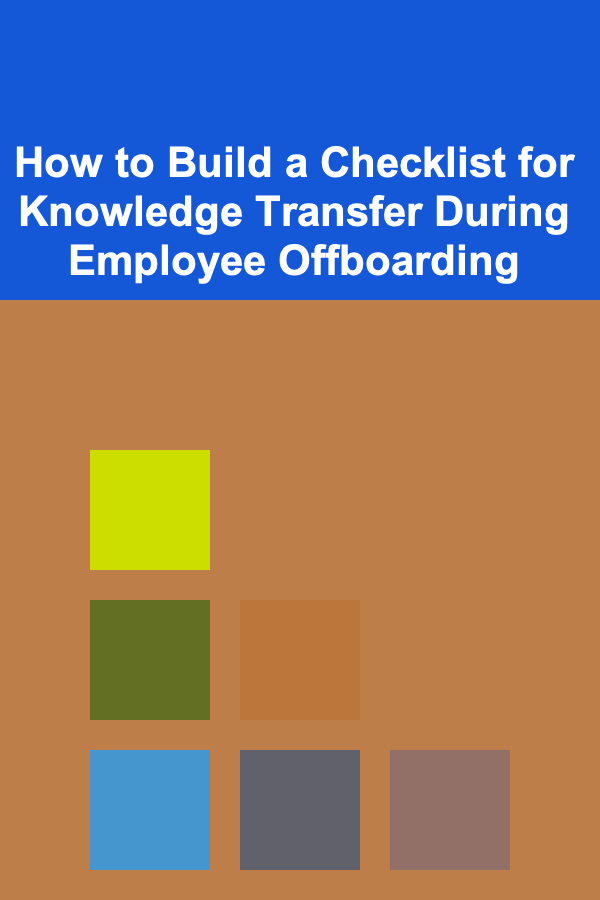
10 Effective Tips for Cutting Down on Restaurant and Coffee Shop Expenses
ebook include PDF & Audio bundle (Micro Guide)
$12.99$10.99
Limited Time Offer! Order within the next:

Eating out at restaurants and grabbing coffee from cafes is often seen as a treat or a way to break up the monotony of daily life. However, these small indulgences can quickly add up and put a serious dent in your budget. If you find yourself spending too much at restaurants and coffee shops, don't worry---you're not alone. Many people unknowingly overspend in these areas, thinking that the costs are insignificant when broken down into smaller amounts. But over time, these little daily luxuries can add up to hundreds of dollars a month.
In this actionable guide, we'll explore 10 effective and practical tips for cutting down on restaurant and coffee shop expenses without sacrificing the pleasure of enjoying good food and drinks. Whether you're looking to save money, improve your financial habits, or simply make your dining and coffee experiences more intentional, these tips will help you reduce unnecessary spending while still allowing you to enjoy eating out.
1. Set a Monthly Budget for Eating Out
One of the most effective ways to cut down on your restaurant and coffee shop spending is to set a strict monthly budget. This gives you clear parameters for how much you can afford to spend without going overboard. Having a predetermined budget for dining out helps you make conscious choices and prevent impulse visits.
Action Steps:
- Evaluate your current spending on restaurants and coffee shops over the past few months.
- Set a realistic budget based on your income and financial goals. For example, allocate a fixed amount for eating out, such as $100 per month.
- Use a budgeting app or spreadsheet to track your expenses throughout the month. Make adjustments if necessary to avoid overspending.
By sticking to a budget, you can enjoy your meals and coffee outings guilt-free, knowing you're staying within your limits.
2. Limit Dining Out to Special Occasions
One way to cut back on restaurant and coffee shop visits is to reserve these experiences for special occasions only. Instead of making it a daily habit, make dining out something to look forward to by planning it for celebrations, important meetings, or weekends.
Action Steps:
- Plan special dinners or coffee meetups ahead of time, using them as opportunities to celebrate milestones or catch up with friends.
- Avoid going out simply out of convenience or boredom. Instead, cook at home or brew coffee at home for the regular days.
By limiting dining out, you can make these outings feel more rewarding, and your wallet will thank you for it.
3. Learn to Cook Simple and Delicious Meals at Home
Cooking at home can be far less expensive than dining out, and you can create meals that are just as satisfying. With the right skills and recipes, you can enjoy meals that rival your favorite restaurant dishes at a fraction of the cost.
Action Steps:
- Start by learning a few easy and healthy recipes that you can rotate throughout the week. Websites, cooking apps, and YouTube are great resources for beginner chefs.
- Invest in kitchen tools like a slow cooker, air fryer, or Instant Pot to make meal prep easier and faster.
- Prepare larger portions and save leftovers for the next day to maximize your effort.
Cooking at home can be fun, creative, and rewarding, plus it helps you take control of your finances and health.
4. Brew Your Own Coffee or Tea
Coffee from cafes can be a major expense if you're stopping in every day. Brewing your own coffee or tea at home can save you a significant amount of money. The investment in a quality coffee maker, grinder, and a few quality beans will pay off quickly.
Action Steps:
- Invest in a good coffee maker or French press and purchase your favorite coffee beans or loose-leaf teas.
- Experiment with different brewing methods to find what you enjoy. With a little trial and error, you can create coffee or tea that tastes just as good (if not better) than what you'd get at a café.
- Prepare your coffee or tea the night before and bring it with you if you're on the go, or set up a morning routine that allows you to enjoy your drink at home.
Not only will you save money, but you'll also have more control over the ingredients and quality of your coffee.
5. Make Use of Loyalty Programs and Discounts
Many restaurants and coffee shops offer loyalty programs that reward repeat customers with discounts, free items, or exclusive deals. Take advantage of these programs to reduce your expenses over time.
Action Steps:
- Sign up for loyalty programs at your favorite coffee shops and restaurants. Many offer apps or punch cards that track your purchases and offer rewards after a certain number of visits.
- Keep an eye on special promotions, such as "buy one, get one free" offers or birthday discounts.
- When ordering, always ask if there are any current deals or discounts available.
These rewards may not seem like much at first, but they can add up over time and help you save on your regular coffee and dining habits.
6. Downsize or Share Portions When Dining Out
Portion sizes at restaurants are often larger than what we actually need, leading to unnecessary waste and extra costs. Consider downsizing your order or sharing dishes to reduce both food waste and your overall bill.
Action Steps:
- Order smaller portions, such as appetizers or side dishes, instead of full meals. Many restaurants offer smaller or "light" options on their menu.
- If dining with others, share dishes to avoid ordering more food than necessary. This not only reduces costs but also allows you to try a variety of different dishes.
- Skip the extras like drinks or desserts unless they're necessary for the dining experience.
By being mindful of portion sizes, you can make your dining experiences more economical without sacrificing the enjoyment of eating out.
7. Cook in Bulk and Meal Prep for the Week
Meal prepping is a great way to reduce your reliance on restaurants and coffee shops. When you cook in bulk, you can prepare meals ahead of time and save them for the week. This reduces the temptation to dine out when you're busy or don't feel like cooking.
Action Steps:
- Choose a few simple and nutritious recipes that you can make in bulk, such as soups, stews, casseroles, or salads.
- Cook and store these meals in individual portions so that you can grab them throughout the week when you need a quick lunch or dinner.
- Batch cook grains, proteins, and vegetables that can be mixed and matched for different meals.
With meal prepping, you'll always have homemade food ready to go, reducing the urge to spend on expensive takeout.
8. Bring Your Own Snacks and Drinks
If you often find yourself at a coffee shop or restaurant for a quick snack or beverage, consider bringing your own snacks and drinks to avoid unnecessary purchases.
Action Steps:
- Carry a reusable water bottle with you throughout the day so you can refill it instead of buying bottled water or drinks.
- Pack snacks like fruits, nuts, or homemade baked goods to satisfy cravings without turning to coffee shops for pastries or snacks.
- Invest in a thermos or insulated bottle to bring your coffee or tea from home.
By preparing your own snacks and beverages, you can resist the urge to splurge on overpriced items while still keeping your energy levels up.
9. Choose Value Menus and Budget-Friendly Restaurants
When dining out, look for restaurants that offer value menus, happy hour specials, or budget-friendly options. Many restaurants provide discounted meals during specific times of the day or week.
Action Steps:
- Look for restaurants in your area that offer daily specials or lunchtime discounts.
- Research restaurants with value menus or combo deals that give you more food for less money.
- If you're visiting a more expensive restaurant, opt for simpler dishes or ask about off-menu items that may be cheaper.
These options can help you enjoy dining out without feeling the guilt of overspending.
10. Be Mindful of Emotional Spending
Emotional or stress-related spending at restaurants and coffee shops is a common problem. Many people turn to food or drinks as a form of comfort, which can lead to unnecessary expenses. Being mindful of your emotional triggers can help you reduce these impulsive behaviors.
Action Steps:
- Keep track of your mood before you dine out or grab coffee. Are you eating out because you're stressed, tired, or bored?
- If emotional eating is a concern, look for alternative ways to cope with stress, such as going for a walk, practicing meditation, or talking to a friend.
- Set rules for yourself, such as only going to coffee shops if you're meeting someone or only eating out once a week as a treat.
Being more aware of your emotions and how they influence your spending habits will allow you to make better financial decisions in the long run.
Conclusion
Cutting down on restaurant and coffee shop expenses doesn't mean you have to completely eliminate these pleasures from your life. By being mindful, planning ahead, and implementing the tips in this guide, you can reduce unnecessary spending while still enjoying occasional dining experiences. Whether it's cooking at home, brewing your own coffee, or taking advantage of loyalty programs, small changes can have a big impact on your overall financial well-being. With a bit of effort, you'll find that you can enjoy your favorite foods and drinks without breaking the bank.

How to Build a Checklist for Knowledge Transfer During Employee Offboarding
Read More
How to Design a Functional Essential Oil Station
Read More
How to Soundproof a Bathroom for Quiet Relaxation
Read More
Mastering Soft Skills: Why They Matter in the Job Market
Read More
Shopping Sales and Clearance Racks: How to Save Big on Your Favorite Brands
Read More
How To Research German and Slavic Folkloric Creatures
Read MoreOther Products

How to Build a Checklist for Knowledge Transfer During Employee Offboarding
Read More
How to Design a Functional Essential Oil Station
Read More
How to Soundproof a Bathroom for Quiet Relaxation
Read More
Mastering Soft Skills: Why They Matter in the Job Market
Read More
Shopping Sales and Clearance Racks: How to Save Big on Your Favorite Brands
Read More